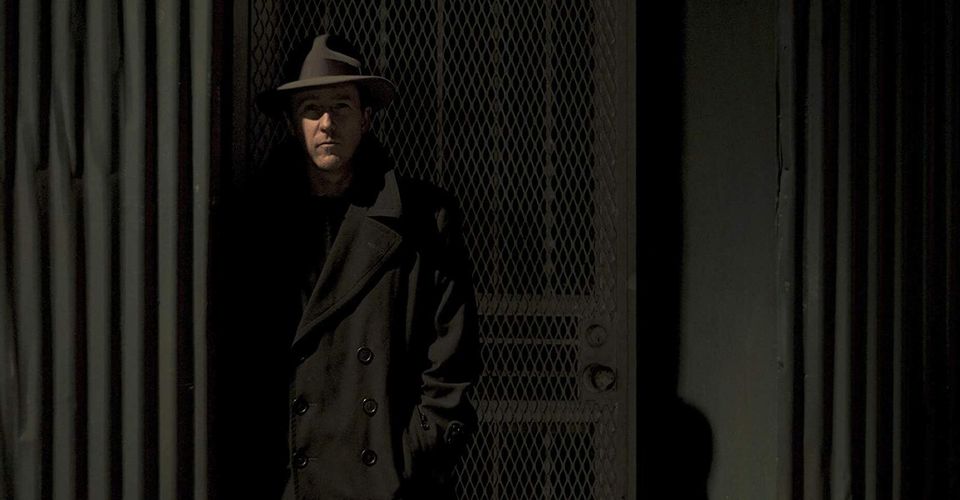Motherless Brooklyn: 5 Things That Are Historically Accurate (& 5 That Aren’t)

Edward Norton’s second directorial effort, Motherless Brooklyn, follows a private investigator named Lionel Essrog (played by Norton) as he tries to find out who is behind the murder of his mentor Frank Minna (Bruce Willis). Set in New York City in 1957, the film follows in the footsteps of classic film-noir thrillers such as The Maltese Falcon as it tells its story of political intrigue, double-crosses, and of course, sleuthing.
With the film being something of a period piece, however, comes the challenge of making the film historically accurate. This affects every aspect of the filmmaking process, from the writers having to make sure the script is faithful to history to the production team making sure everything looks period accurate. Of course, on a big production like Motherless Brooklyn, the filmmakers are sure to get a lot of things right while also overlooking little details. With that in mind, here are five things that are historically accurate in Motherless Brooklyn, and five things that are not.
10 Accurate: Moses Randolph

Alec Baldwin’s villainous Moses Randolph is actually loosely based on a real person. That person is Robert Moses. Moses was an actual public official who served in New York in the 1950s. He was known for his urban renewal plans that saw various slums in New York torn down and replaced with apartment homes.
While certainly less ruthless than Baldwin’s character, Moses’ did force a lot of lower-class citizens out of their homes. The portrayal of Moses Randolph in Motherless Brooklyn is very much in line with the more negative opinion that history has taken toward the real-life Moses, an opinion which was popularized by Robert Caro’s biography of Moses entitled The Power Broker.
9 Inaccurate: Watch The Curb

The opening sequence of Motherless Brooklyn dives right into the action with Lionel assisting Frank on a job. The job quickly goes sideways, and a frantic car chase ensues. Given how intense the sequence is, viewers may be forgiven for not paying much attention to what is going on in the background.
However, if you look carefully as to car carrying Lionel whips around a corner, you can clearly see a ramp for the handicapped on the corner of the sidewalk. These are so commonplace now that one might be forgiven for not thinking twice about its presence in the film. However, such ramps were not in use until the 1990s, a good four decades after Motherless Brooklyn is set.
8 Accurate: Leaving Home

As mentioned above, the policies of Robert Moses led to many lower class citizens in New York City to be forced out of their homes. Motherless Brooklyn features similar events as part of a major plotline. A woman who is key to Lionel’s investigation has seen the impact of Moses Randolph’s actions on the lower classes and has joined an endeavor to resist Randolph’s plans. Even the character who is leading this endeavor is based on a real person named Jane Jacobs, who was one of Robert Moses’ greatest critics.
Norton’s depiction of these events may be somewhat dramatic, but they are grounded in events that actually took place.
7 Inaccurate: Mixed Signals

Returning to the opening scene of the film, there is yet another historical inaccuracy in the background of the sequence. This one is a bit more difficult to pick up on because what appears on screen is technically accurate. As Lionel waits in a phone booth for Frank’s signal, a police car drives by with its siren blaring.
Everything about the car visually is historically accurate. The problem is with the sound that the siren makes because it does not actually match what police sirens in 1957 sounded like. The sound heard in the film is that of an electronic siren, which was not invented until the 1960s. Motherless Brooklyn‘s filmmakers almost got this one right but messed it up in the editing room.
6 Accurate: Paul Randolph

There is yet another character in Motherless Brooklyn who is based on a real person. Paul Randolph (Willem Dafoe) is the brother of Moses Randolph. Moses treats his brother horribly throughout the film, with his actions forcing Paul to live in poverty and obscurity while he himself rises to prominence. This is all in light of the fact that both characters are in fact, talented engineers.
This bears a striking resemblance to Robert Moses’ real-life brother, whose first name was also Paul. Even a cursory examination of the relationship between Robert and Paul Moses makes it very clear that Norton adapted these two brothers to near perfection in the characters of Moses and Paul Randolph.
5 Inaccurate: The Panic Bar

The risk of shooting scenes for a period piece on location is that sometimes little background details slip through the cracks. In this case, someone on the set of Motherless Brooklyn failed to notice that a camera angle was exposing a modern item in the room. Late in the first half of the film, Lionel attends a town hall meeting as a part of his investigation. The main focus of the scene is Lionel’s observations of the people in the room, so Norton was likely too busy making sure the camera captured all of the human interactions in the scene to notice that one of his shots exposes a modern panic bar on one of the doors in the room.
While panic bars were in use in the 1950s, the type of panic bar that is visible in this scene was not even invented until 1988.
4 Accurate: The Private Investigators

Motherless Brooklyn has an overall accurate depiction of how being a private investigator works. Unlike many films featuring private investigators, Motherless Brooklyn, by and large, avoids any tropes that force its protagonist to behave in a way that a real private investigator would not. Most of Lionel’s investigation throughout the film involves him following people, watching people, and using a ruse to gain the trust of another character.
These are all things that a real private investigator would do. Even the film’s climax is fairly accurate, with the final confrontation revolving around Lionel using the information he has gathered to create a desirable outcome rather than arresting the villain, which is not something that private investigators are authorized to do except in specific circumstances.
3 Inaccurate: Lionel’s Illegal Activities

While Lionel’s depiction is overall accurate, there are still two glaring moments in Motherless Brooklyn where he does things that are actually illegal for a private investigator to do. For example, in one scene Lionel enters a private residence while following someone.
This is of course trespassing, and no private investigator would actually do that because it would have serious legal ramifications for them. Another more obvious example of Lionel doing something illegal is when he steals a journalist’s credentials so he can pose as that journalist. While a real private investigator might pretend to be something he is not, a real private investigator would never outright steal another person’s identity.
2 Accurate: “Daily Battles”

Later in the film, Lionel is taken to a jazz club where he listens to a jazz band perform. One song, entitled “Daily Battles,” that the band plays deserves particular notice. Norton had real-life jazz musician Wynton Marsalis prepare “Daily Battles” to have a similar sound to the work of Miles Davis.
Miles Davis is known as one of the most influential jazz musicians in the history of the genre, so it is no surprise that Norton wanted to tribute him in the soundtrack to Motherless Brooklyn. The smooth arrangement of “Daily Battles” is very reminiscent of the music Davis put out in 1957, particularly his song “‘Round Midnight.”
1 Inaccurate: Anachronistic Dialogue

Sometimes when writing a period piece, a screenwriter will accidentally slip in an anachronistic saying that is currently common use. Motherless Brooklyn is no exception to this. At one point in the film, a character is said to be wearing granny glasses. The problem is that nobody in 1957 would have used this terminology because the term “granny glasses” was not in popular use at that time.
Another instance of this sort of thing happening in Motherless Brooklyn comes when a reference is made to following a paper trail. While the term “paper trail” did make its first appearance prior to the 1950s, it was not a part of the common vocabulary at this point in history.
About The Author

















